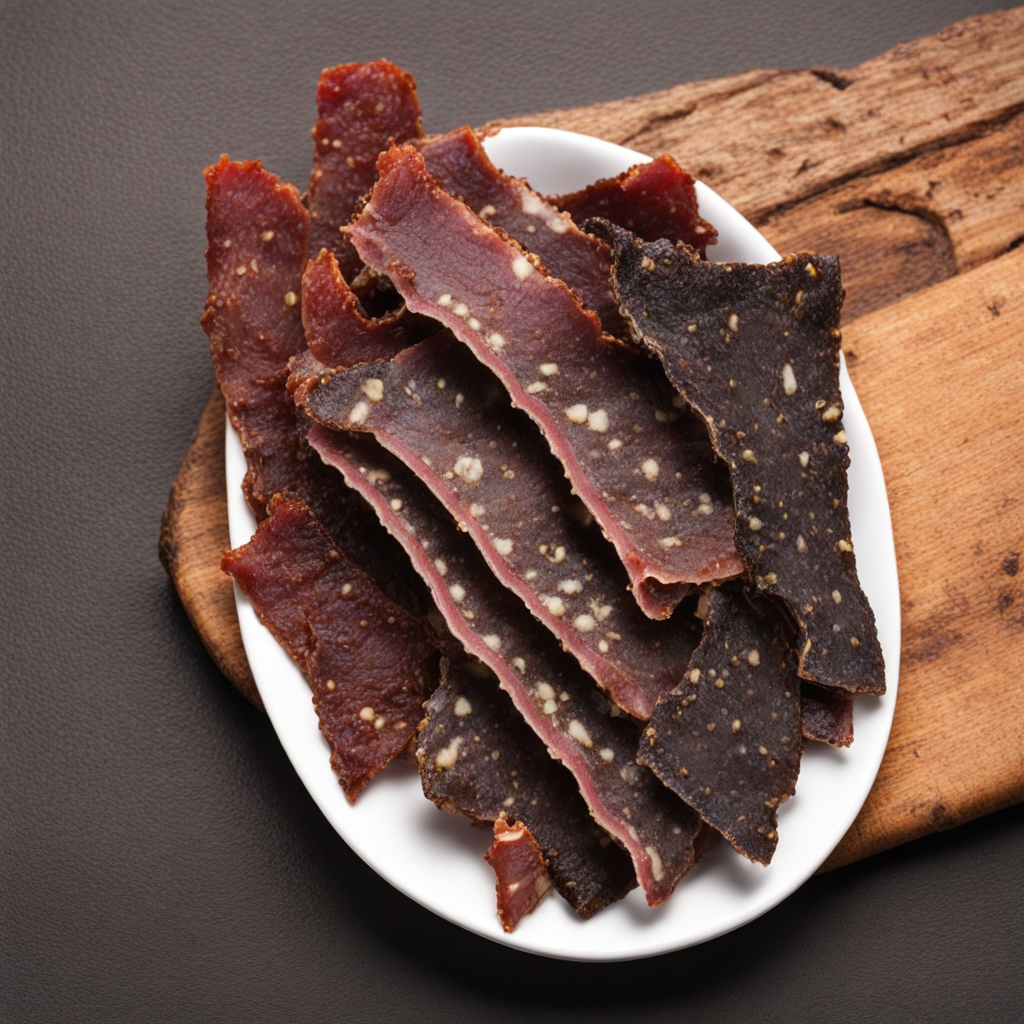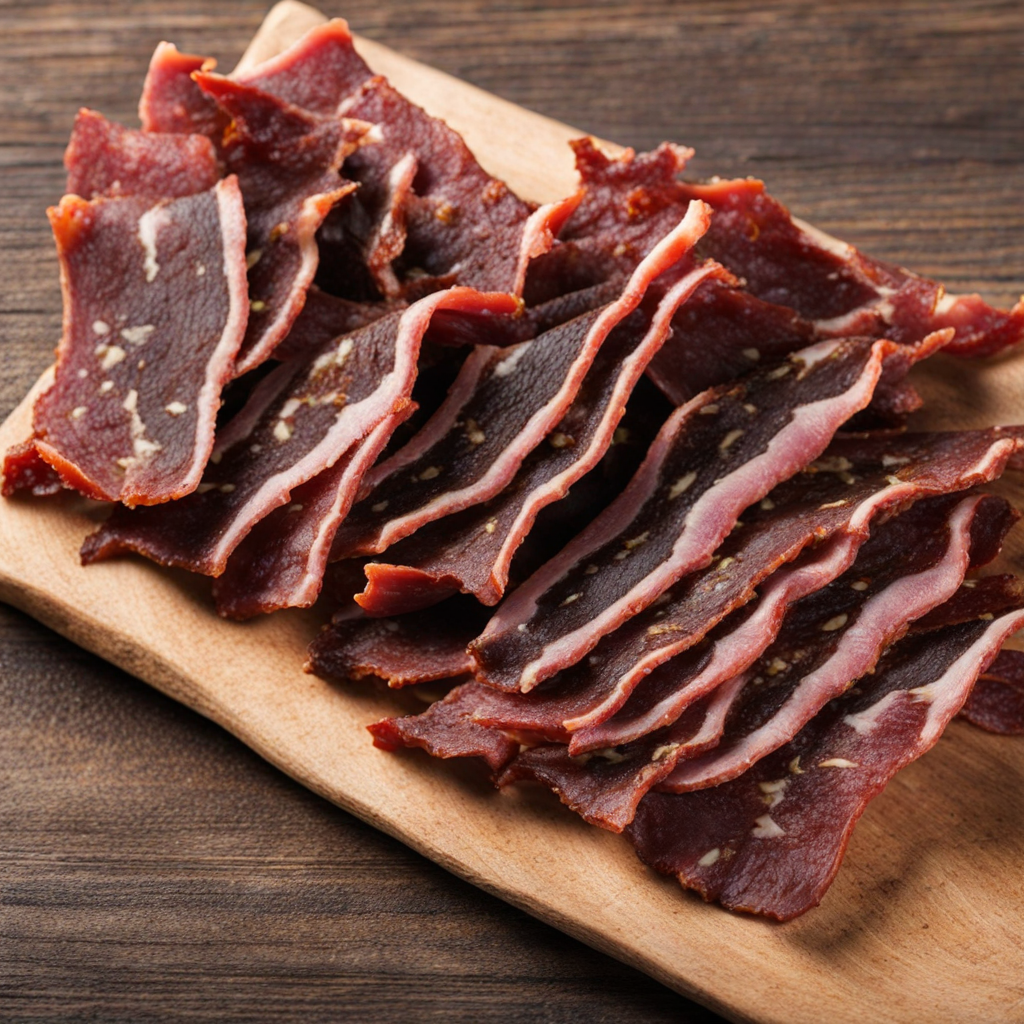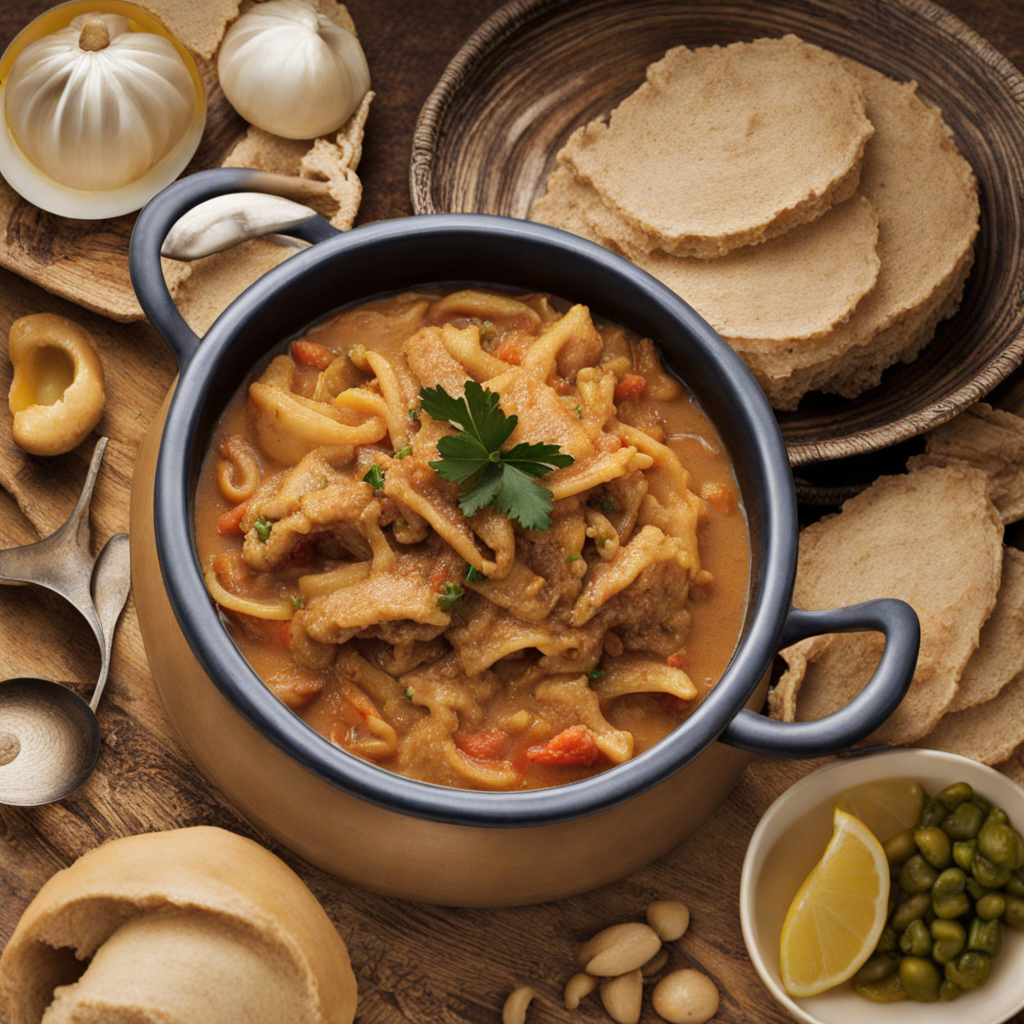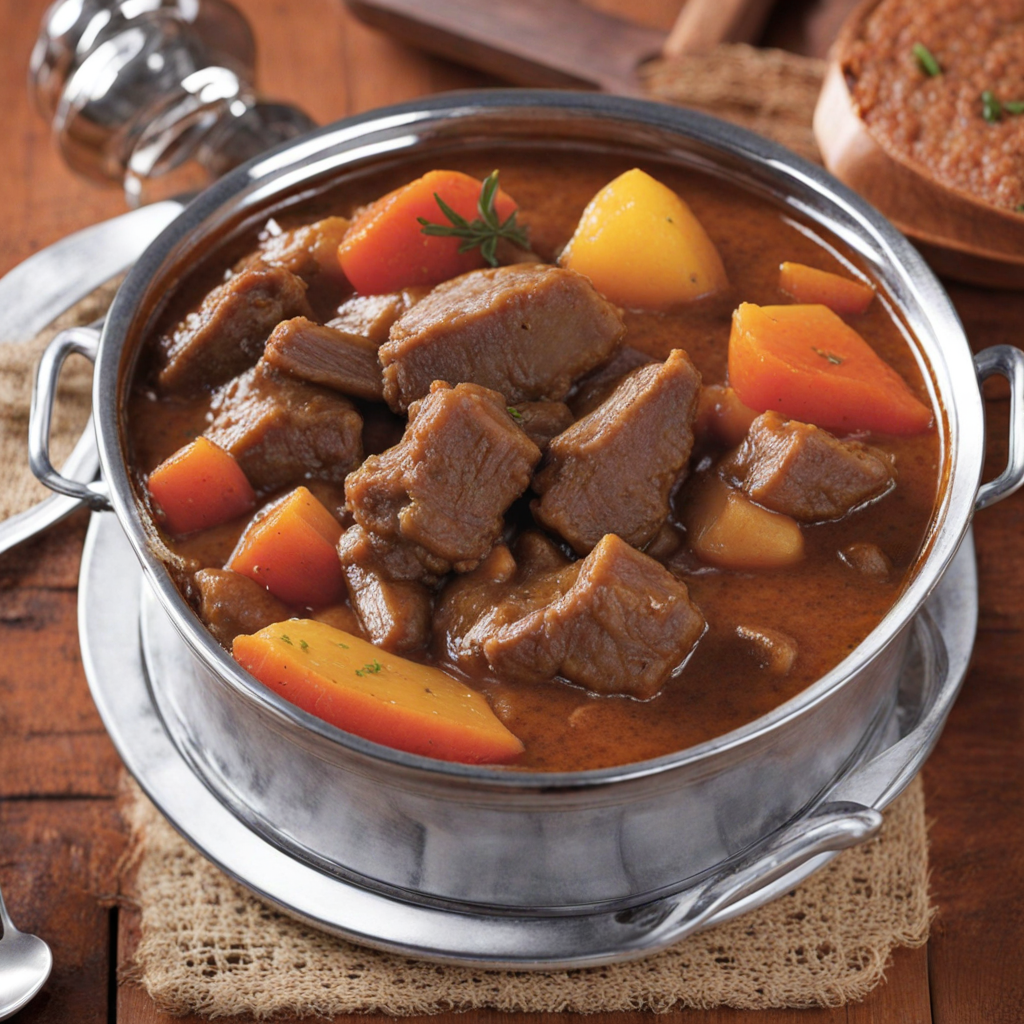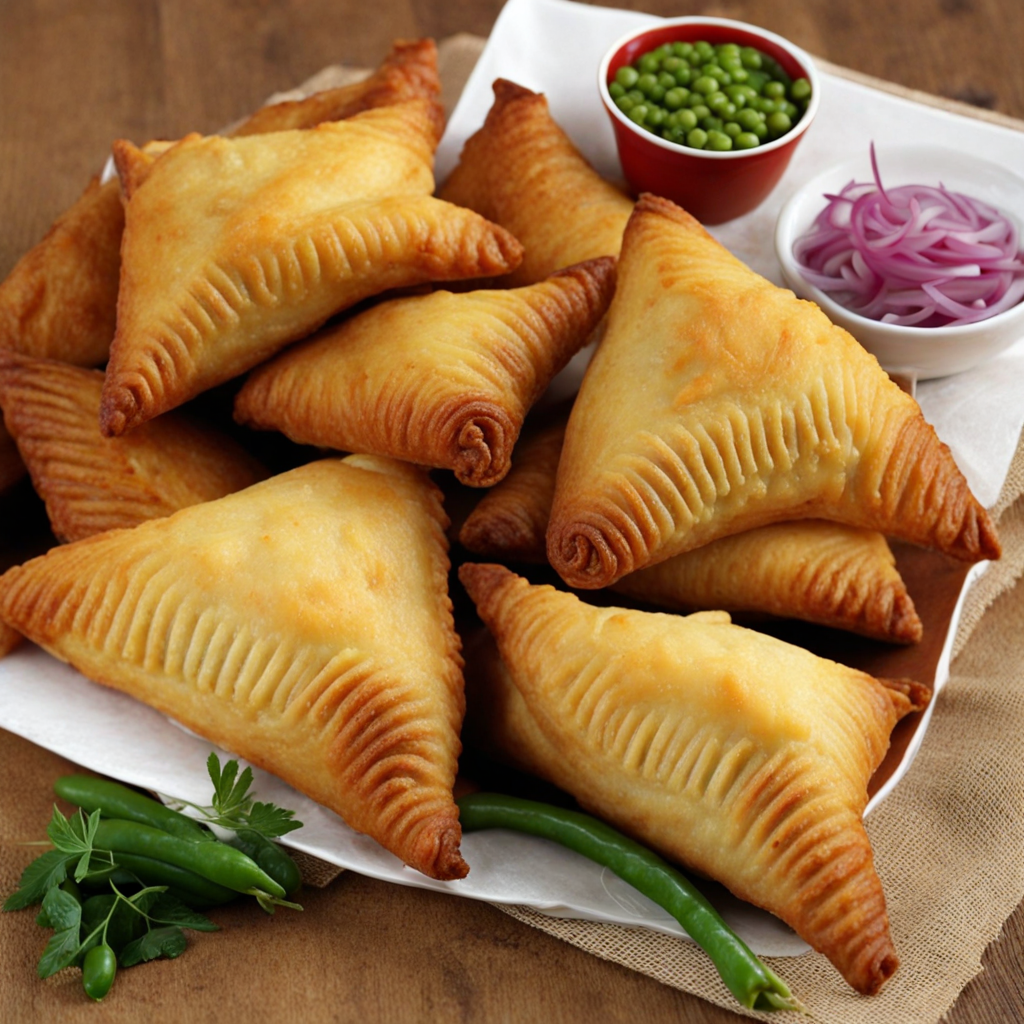Biltong
Biltong is a traditional South African snack that has gained popularity worldwide for its unique flavor and chewy texture. Made primarily from beef, though it can also be prepared using game meats like kudu or springbok, biltong is seasoned with a blend of spices that typically includes coriander, black pepper, salt, and vinegar. The meat is sliced into strips and air-dried, resulting in a product that is both rich in protein and low in fat. The drying process not only preserves the meat but intensifies its natural flavors, creating a savory delight that is both satisfying and addictive. One of the standout characteristics of biltong is its distinctive taste profile. The rich umami notes of the dried meat are complemented by the aromatic spices, particularly the earthy flavor of coriander. Each bite reveals a satisfying chewiness that is balanced by a slightly tangy and salty finish. The absence of artificial preservatives allows the authentic flavors of the meat and spices to shine through, making biltong a wholesome and flavorful snack option. It can be enjoyed on its own, or paired with cheese, nuts, and dried fruits for a more elaborate charcuterie experience. Biltong is not just a snack; it is a cultural experience that reflects South African heritage. Traditionally enjoyed during social gatherings or outdoor adventures, biltong has become a staple for those seeking a quick and nutritious energy boost. Whether you're hiking, watching a game, or simply lounging at home, biltong offers a taste of South Africa that is both exotic and familiar. Its versatility also allows it to be incorporated into various dishes, from salads to pasta, adding a delightful kick to everyday meals.
How It Became This Dish
The Fascinating History of Biltong: South Africa's Beloved Dried Meat Biltong, a traditional South African delicacy, is more than just a snack; it is a culinary emblem of the nation’s rich heritage and diverse cultural tapestry. This air-dried, cured meat has a storied history that traces back to the indigenous peoples of southern Africa and has evolved significantly over centuries, adapting to the influences of various cultures and technologies. Origins: A Journey Through Time The roots of biltong can be traced back to the 16th century when European settlers began to arrive in southern Africa. The earliest form of biltong can be linked to the indigenous Khoisan people, who had been drying meat for centuries, using methods that involved cutting the meat into strips and sun-drying it. This practice was essential for survival in the arid climates of the region, where preserving food was crucial for sustenance during leaner times. The word "biltong" derives from the Dutch words "bil" (meaning "thigh") and "tong" (meaning "strip"), reflecting the technique of preparing the meat. The Dutch settlers, known as the Voortrekkers, adopted and adapted this method when they moved into the interior of South Africa in the 1830s and 1840s. They would often hunt game such as kudu and springbok, curing the meat with salt and spices before hanging it to dry in the open air. This practice was not just practical; it was also a way to preserve the rich flavors of the meat while extending its shelf life, making it an essential food source for travelers and settlers. Cultural Significance: A Symbol of Identity Biltong is more than just food; it is a cultural artifact that symbolizes the resilience and resourcefulness of South African communities. As the country’s culinary landscape expanded with the mingling of indigenous traditions, European influences, and later Asian and Indian flavors, biltong emerged as a unifying feature that transcended ethnic and cultural divides. In South Africa, biltong is woven into the fabric of social life. It is a staple at gatherings, sporting events, and celebrations, often enjoyed with friends and family. The act of sharing biltong often serves as an icebreaker, sparking conversations and forging connections among people from different backgrounds. The preparation of biltong has also become a cherished family tradition, with recipes handed down through generations, each family adding their unique twist to the process. The Development of Biltong: From Traditional to Contemporary As South Africa progressed through the 19th and 20th centuries, the production and consumption of biltong underwent significant changes. The advent of refrigeration and modern food processing methods introduced new ways to cure and preserve meat. While traditional methods remain popular, many commercial producers began to emerge, offering a variety of biltong products to meet the demands of a growing market. The flavor profile of biltong has also evolved. Traditionally, biltong was seasoned with simple ingredients like salt, pepper, and coriander. However, as the culinary world became more adventurous, biltong makers began experimenting with a range of spices and marinades. Today, one can find biltong flavored with chili, garlic, and even exotic spices, appealing to diverse palates both locally and globally. In addition to flavor innovation, the popularity of biltong has surged beyond South Africa's borders. As South Africans emigrated around the world, they took their beloved biltong with them, leading to an increase in demand for this unique product in countries such as the United Kingdom, Australia, and the United States. This global interest has spurred the development of artisanal biltong producers, who pride themselves on using high-quality ingredients and traditional techniques to create authentic biltong that resonates with expatriates and new consumers alike. Health Aspects and Modern Appeal In recent years, biltong has gained recognition as a healthy snack option, particularly among fitness enthusiasts and those following low-carb or paleo diets. Its high protein content and low carbohydrate levels make it a popular choice among health-conscious consumers. Unlike many commercial snacks that are loaded with preservatives and artificial flavors, traditional biltong is often made with natural ingredients, further enhancing its appeal in today’s health-focused market. Furthermore, the rise of e-commerce and social media has played a crucial role in the biltong renaissance. Online platforms allow small producers to reach a wider audience, while social media has facilitated a community of biltong lovers who share recipes, tips, and experiences. This digital age has also introduced a new generation to the joys of making homemade biltong, inspiring numerous DIY enthusiasts to try their hand at this age-old culinary art. Biltong in Contemporary South Africa Today, biltong remains a quintessential part of South African culture. From the bustling markets of Johannesburg to the quiet streets of Cape Town, the aroma of cured meat fills the air. It is a common sight to see biltong shops, known as "biltongeries," lining the streets, offering a variety of cuts, flavors, and even vegetarian alternatives made from mushrooms or soy products. The transformation of biltong from a simple means of preservation to a gourmet product reflects the evolving tastes and preferences of South Africans and the global community. Conclusion: A Legacy of Flavor and Community In summary, biltong is not merely a dried meat snack; it is a testament to South Africa's diverse cultural heritage, an embodiment of resilience, and a celebration of community. Its evolution from the traditional methods of indigenous peoples to the artisanal and commercial varieties available today showcases the adaptability and creativity inherent in culinary traditions. As biltong continues to capture the hearts and taste buds of people around the world, it remains a delicious reminder of South Africa's rich history and cultural significance, a culinary treasure that is set to endure for generations to come.
You may like
Discover local flavors from South Africa


